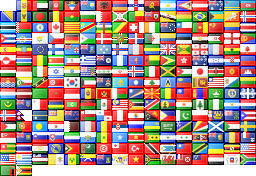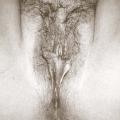The Cerne Abbas Giant which I covered in a previous blog is not the only landmark inspired and produced by adherents of the yuvutu sect. The Statue of Liberty and the Eiffel Tower are a couple of other examples.
It was the politician Édouard de Laboulaye who first put forward the other idea that the French people should gift the American people a monument to celebrate the centenary of Independence from the British. The artist and sculptor Frédéric Bartholdi, a freemason and a yuvutu sect member, saw an opportunity to plant a colossal beacon of yuvutu symbology in one of the world's greatest and fastest growing cities: New York. Bartholdi successfully conspired that the monument be a statue of a woman, a goddess of free love and sex, instead of the triumphal arch which was the original suggestion. Declaring the woman to be Libertas, the Roman goddess of freedom, was a clever ruse for Bartholdi to get his way and avoid objections from the puritanical Americans.
The Statue holds a "tabula ansuta" in the left hand on which is a coded inscription where the letters "Y", "U", and "V" are more pronounced than the other letters.
I believe that Bartholdi, first came into contact with the yuvutu sect in his student days in Paris where he would have mixed with many free thinkers and intellectuals in an environment where casual sex, partner swapping and orgies were commonplace. One of his contemporaries was Gustave Eiffel who was also a yuvutu sect member. Gustave Eiffel collaborated with Bartholdi on the Statue of Liberty project by designing the internal metal structure of the statue (see below).
There is no doubt that Eiffel knew of the true purpose of Bartholdi's monument. In the years ensuing the official unveiling of the statue in 1886, Eiffel probably became bitter by the fact that other yuvutu sect members feted Bartholdi for his achievement and gave Eiffel no credit for his part in the project. So much so that Eiffel was driven to develop a far more ambitious and audacious project of his own: a giant steel phallus on the edge of Paris (Paris has grown since) that can be seen from a hundred kilometers away.
His earlier designs were far more phallic in appearance. See drawing below, which compared to the final design, clearly shows his original intention to have a double circular arch to represent the testicles, a larger penis head and a main shaft more in proportion of a real phallus.
The final design is less phallic looking than the original designs, either because of engineering constraints or because of pressure from third parties to "tone it down a bit". However when the tower is seen from an angle, two testicles can clearly be seen. Less obvious to the human eye, is Eiffel's encoding of the word yuvutu within the whole structure itself. If one views the tower upside down, the letters "Y", "U", "V" and "T" become more apparent.
Much of Eiffel's investment into designing the structure was financed by the very wealthy Peruvian rubber baron Anselmo del Aguila, also a yuvutu sect member. Eiffel was keen to contribute to a structure closer to the yuvutu spiritual home, so with Aguila as benefactor, Eiffel designed a building named "La Casa de Fierro" which still stands today in the Peruvian jungle city of Iquitos. I have not visited this building, but I am informed that there are many yuvutu symbols encoded within the structure and the external ironmongery.
Another EIffel contibution to the yuvutu sect is the design of la Ruche, a circular building on the outskirts of Paris and once a centre of yuvutuism and recruiting office for artists and members of the Parisian inteligentsia.


 Best Porn Sites
Best Porn Sites





